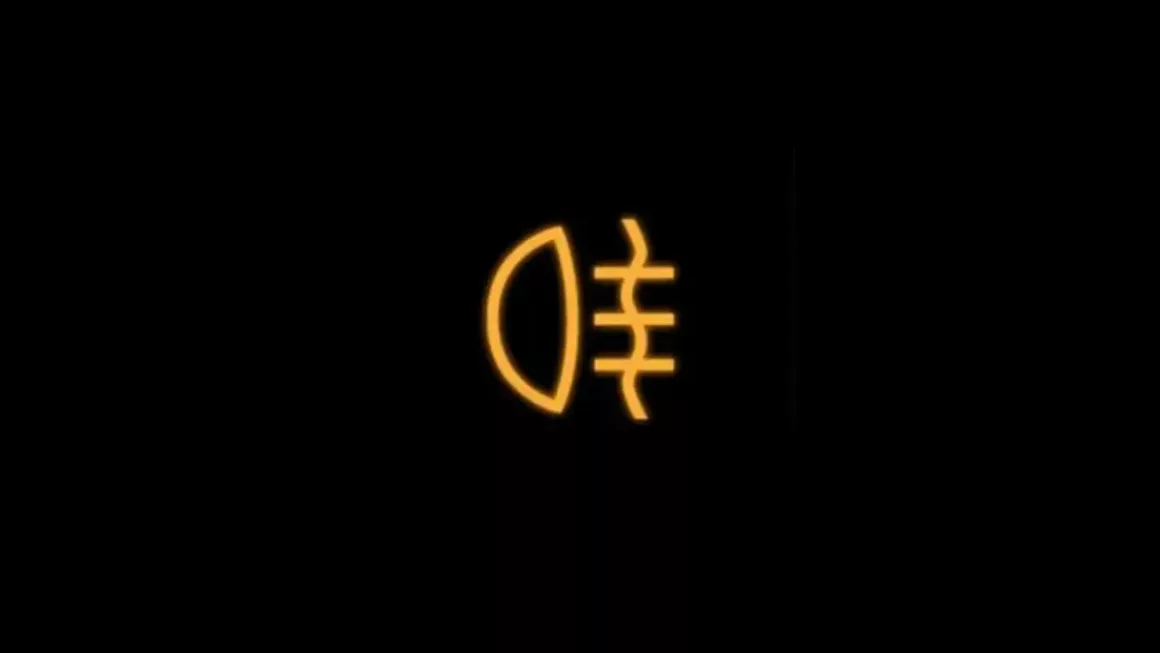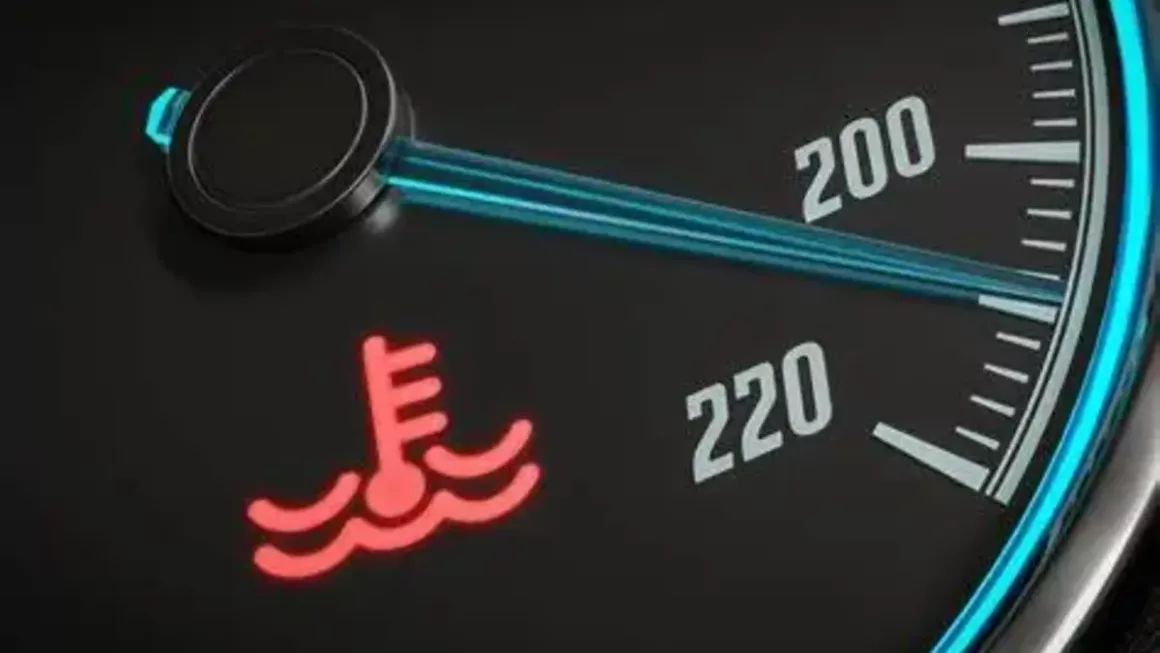Car dashboard symbols can pop up unexpectedly, catching you off guard and potentially causing chaos if you’re unsure of their exact meanings. Although they may appear intimidating at first, getting familiar with them can put you back in the driver’s seat, and help you handle the situation the right way. Recognizing these symbols is extremely crucial as each symbol communicates a unique message about the status of the particular components of your car. And understanding these symbols is not just a matter of convenience; it’s crucial. Ignoring certain indicators on your instrument cluster could lead to potentially hazardous consequences for your vehicle if left unaddressed. If only the instrument cluster was larger, allowing the full name of the light to be displayed instead of just a tiny icon!
Engine Light

The Engine Light, also known as the Check Engine Light, is a warning light that lights up to signal a potential issue with the vehicle’s engine or emission control system. It typically appears as an outline of an engine, often coloured as yellow or orange. Various factors, such as a loose fuel cap, faulty oxygen sensor, emission system malfunctions, or fuel evaporation can cause the icon to light up.
While this warning light doesn’t always indicate an immediate emergency that requires immediate attention, ignoring it can lead to more severe damage or decreased fuel efficiency over time. When the Engine Light comes on, it’s important for drivers to take prompt action by scheduling a diagnostic check with a mechanic to check the underlying problem and prevent expensive repairs or safety troubles while on the road.
Battery Light

The battery is like the Mitochondria for the car – it’s the powerhouse. The Battery Light, which often looks like a simple rectangular shape with a positive and negative sign or a stylized battery icon, will show up to indicate potential issues with the vehicle’s battery or charging system. It typically appears in red or yellow. Common causes for this light include a loose/damaged battery cable connection, faulty alternator, or a failing battery.
When the Battery Light activates, it’s a sign that the vehicle’s electrical system may not be charging properly, which could lead to a dead battery and eventually cause the vehicle to stall. While drivers may still be able to drive the vehicle for some time, it’s important to address the issue as soon as possible. Immediate action involves checking battery connections and, if necessary, seeking help from a mechanic to diagnose and repair the underlying problem before further electrical failure occurs (which may cause permanent and severe damage to your car).
Engine Overheating Light

The Engine Overheating Light is perhaps an extremely critical warning indicator that alerts drivers to an excessively high engine temperature. This can potentially lead to severe engine damage or even a complete breakdown. It looks like a thermometer, or an exclamation mark suspended in waves of water, often coloured red. Causes for this warning light can vary, including low coolant levels, a malfunctioning thermostat, a coolant leak, or a faulty water pump. The Engine Overheating Light may illuminate during heavy traffic, towing heavy loads, or operating the vehicle in extreme temperatures. Ignoring this warning light can result in irreversible engine damage, leaving the vehicle inoperable.
When the Engine Overheating Light activates, it’s essential for drivers to immediately pull over in a safe location, turn off the engine, and allow it to cool down. Additionally, they should be checking the coolant levels and inspecting for any leaks.
Oil Pressure Light

Engine oil is essential for lubricating and reducing friction within your car’s engine. When the oil pressure warning light appears on your dashboard, it means that there’s a drop in oil pressure. A drop in oil pressure can mean a lot of things, but the main result is inadequate oil circulation which can potentially cause severe damage to your vehicle’s engine. The oil pressure icon looks like a lamp, with a drop coming out of it usually red or yellow coloured.
So, if the oil pressure light illuminates, it’s extremely important not to ignore it. Pull over immediately to check your engine oil levels. If levels are low, top-up as necessary. However, if the light persists despite normal oil levels, it could signal a leak in the oil circulation system or a malfunctioning oil pump. In such cases, seeking roadside assistance is your best bet. Have a mechanic diagnose and address the underlying issue promptly.
Low Tire Pressure Light

The Low Tire Pressure Light comes on to alert drivers about inadequate air pressure in one or more tires. It typically appears as an exclamation mark inside a horseshoe or tire symbol, often coloured yellow. Causes for low tire pressure can include temperature changes, punctures, or natural air loss over time. The Low Tire Pressure Light may activate after significant temperature fluctuations or when there’s a sudden loss of pressure due to a puncture or leak.
While driving with low tire pressure may not immediately endanger safety, it can lead to decreased fuel efficiency, poor handling, and increased risk of blowouts. When this light activates, check the tire pressure using a gauge as soon as possible and inflate the tires to the recommended levels mentioned in the vehicle’s manual.
Fuel Light

The Fuel Light is one of the most commonly recognised lights. As its name suggests, the Fuel Light typically activates to alert drivers when the fuel level is critically low , or when the fuel level drops to the reserve level. It generally appears as a fuel pump symbol or a gas canister icon, often coloured yellow or orange. While many drivers are familiar with this warning, some may overlook it, risking running out of fuel entirely.
Ignoring the Fuel Light can lead to unexpected stalling and potential safety hazards, especially if stranded in a remote location. When the Fuel Light illuminates, drivers should prioritise refuelling at the nearest petrol pump.
Parking Brake Light

The Parking Brake Light signals if the parking brake is engaged. Typically depicted as a red exclamation mark enclosed in a circle, this light may illuminate when the parking brake is unintentionally left engaged while driving. It also serves to signal that the main brake can be safely released when parked on a hill, reducing the risk of rolling back and potential collisions with vehicles behind.
In some cases, it also illuminates to alert the driver about low brake fluid levels or issues with brake components. It’s not uncommon for drivers to overlook a still-engaged parking brake, leading to sudden stalling upon acceleration and potentially weakening the parking brake mechanism over time. Neglecting this warning light can result in compromised braking performance or complete brake failure, posing serious safety risks. Upon seeing the Parking Brake Light, drivers should promptly verify if the parking brake is still engaged.
Fog Lamp Light

The Fog Lamp Light signals when the vehicle’s fog lamps are engaged. Fog lamps enhance visibility in adverse weather conditions, such as fog, heavy rain, or snow, by casting a low, wide beam of light close to the ground. Activating fog lamps improves both the visibility for the driver and at the same time increases the vehicle’s visibility to other drivers on the road.
It looks like a symbol showing the front view of a vehicle with wavy lines in front of it, representing fog or mist. This symbol lights up green in colour on the dashboard when the fog lamps are activated. Some vehicles may have a separate indicator for each fog lamp, while others might have a single indicator that lights up when both fog lamps are turned on.
Transmission Temperature Light

The Transmission Temperature Light alerts drivers to elevated transmission fluid temperatures, typically appearing as a thermometer or gear icon, often red or yellow in colour. Causes may include towing heavy loads, driving in extreme conditions, or a malfunctioning transmission cooler. Ignoring this warning can result in transmission damage or failure. Drivers should pull over safely when the light activates, allowing the transmission to cool down. Checking transmission fluid levels and ensuring proper airflow to the transmission cooler is essential. Seeking professional assistance may be necessary to diagnose and address underlying issues to prevent long-term damage and ensure safe operation of the vehicle.
ABS Light

The ABS (Anti-lock Braking System) Light signals a malfunction in the vehicle’s ABS system, crucial for preventing wheel lock-up during braking. ABS prevents skidding and maintains steering control during hard braking, improving overall vehicle stability and safety. The light often appears as “ABS” within a circle, usually in yellow or orange. Causes include sensor issues or low brake fluid. Ignoring it can compromise braking, especially in emergencies. Drivers should promptly have the vehicle inspected for repair to make sure of optimal braking performance and safety.
Summary
In conclusion, understanding and promptly responding to car warning lights is extremely important for maintaining vehicle safety and preventing potential damage. Each warning light serves as a critical indicator of underlying issues, ranging from engine problems to low tire pressure or transmission issues. By recognizing these warnings and taking appropriate action, drivers can avoid costly repairs, ensure optimal vehicle performance, and, most importantly, improve their own and others’ safety on the road. Regular vehicle maintenance can help prevent warning lights from activating in the first place. Because as they say – “prevention is always better than cure!”



